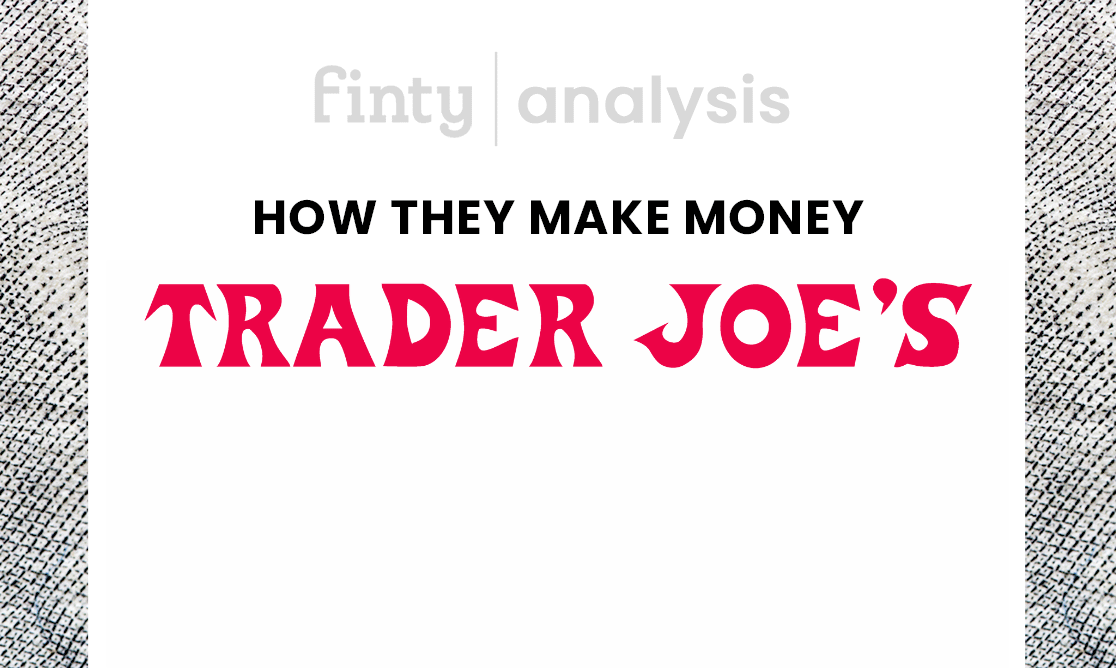- Trader Joe's is the low-cost leader for high-quality groceries in the United States.
- Trader Joe's is a subsidiary of the "Aldi Nord" group, the UK's biggest grocery discount supermarket chain.
- Trader Joe's makes money by offering in-house brands with a reputation for quality.
Joe Coulombe founded Trader Joe's in 1967, with its first store opening in Pasadena, California. The company is a privately held grocery store chain and a subsidiary of the Aldi Nord group, with headquarters in Monrovia, California.
Trader Joe's operates a model where it doesn't charge its suppliers slotting fees, and most of its stores have small footprints in terms of square footage.
Trader Joe's started as "Pronto Market," rebranding to its current moniker in the 70s. The Aldi Nord group acquired Trader Joe's in 1979.

Coming up next
What do Trader Joe's do?
Trader Joe's is a discount retailer selling high-quality groceries at low prices.
The company can offer low pricing to consumers because of its in-house branding model and reduced stock holding. Trader Joe's offers a limited number of SKUs compared to other grocery chains.
It focuses on fast-moving consumer products where it receives deep discounting from its suppliers due to the volume it orders.
The chain grew from a single store in California to 530 locations throughout the United States in 2021.
Thanks to its low-cost, high-quality grocery model, Trader Joe's enjoys a good relationship with its consumer base.
The company does minimal advertising, relying on word-of-mouth to bring it new business.
How does Trader Joe's work?
The Aldi Nord group bought Trader Joe's in 1979. However, it decided to let Trader Joe's keep its branding.
However, the companies follow the same low-cost leader model in the European and US markets.
80% of Trader Joe's SKUs are in-house brands. The company focuses on a core product offering.
Therefore, it has far fewer SKUs in its listing than other big-box discount retailers operating in the Americas.
An average grocery giant will stock anywhere up to 10,000 to 20,000 SKUs, while Trader Joe's has 2,000.
The company adopts this strategy for a reason. Market psychology suggests that when consumers have fewer options available, they are likely to spend more on their grocery bills than if they had more choices.
Trader Joe's also has a higher operating cost model than other big-box retailers. The company has more employees per square foot in-store than other high-volume grocery store chains like Whole Foods.
As a result, Trader Joe's offers the customer more of an interactive in-store experience, improving customer engagement and retention with its brand.
Trader Joe's chose to forgo the path of adopting in-store digital checkout lines. Instead, it uses a low-tech approach, and it has real checkout assistants helping customers with their shopping.
The company also stocks its shelves after hours. It's one of America's biggest employers in the grocery market.
How Trader Joe's make money
Trader Joe's makes money by offering consumers a low-cost, high-quality grocery store experience.
It maintains this low-cost model because it provides in-house brands instead of premium brands.
However, the company has a reputation for delivering quality groceries, on par with what you would expect when visiting a Whole Foods location.
Trader Joe's operates a centralized distribution model, saving costs on deliveries and enabling the company to create in-house branded products for sale in its stores.
As a result, it offers the same quality as premium brands without the high price tags.
Trader Joe's also offers far fewer SKUs in its stores, with the average locations stocking between 2,000 to 4,000 SKUs or a quarter of what its competitors offer.
This strategy creates consumer psychology that forces consumers to unconsciously spend more on their grocery bills, boosting their revenues.
Future growth engine
Trader Joe's operates a simple model, and it has no plans to implement any changes. Nor does it intend on launching an IPO anytime soon.
Trader Joe's also does minimal advertising to attract new customers.
Instead, it relies on word-of-mouth advertising where its customers talk about the brand, attracting new buyers to its store locations across the US.
The company plans to continue its expansion into the American market.
Competitors
Trader Joe's competes with other discount big-box retailers in the American market. Some of its top competitors include the following companies and brands.
- CostCo
- Whole Foods
- Walmart
- Safeway
- Target

